1. Flavored Yogurt Parfaits
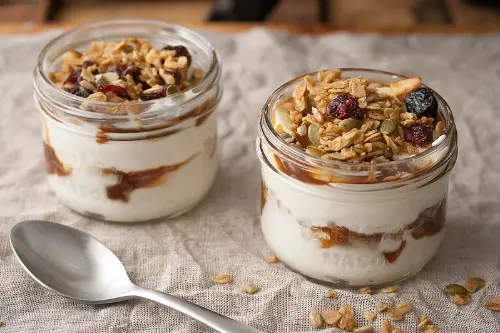
Layered with fruit, granola, and honey, yogurt parfaits are a fast-food menu staple marketed as a light option. But flavored yogurts often contain more sugar than soda, and granola adds even more. A single parfait can pack 30+ grams of sugar and minimal protein. It’s more candy bar than breakfast.
In Europe, yogurt is typically plain and unsweetened, eaten with fresh fruit or nuts. Americans, meanwhile, treat parfaits like a guilt-free indulgence. The glass cup and fruit garnish make it look virtuous. But nutritionally? It’s a sugar trap in disguise.
2. Smoothie Bowls
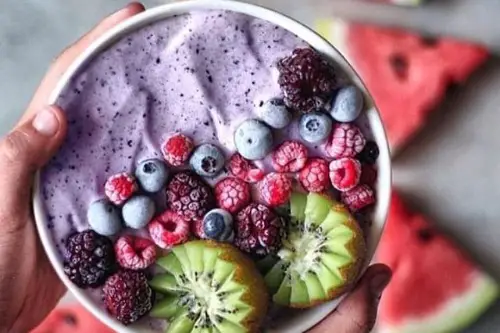
Packed with fruit, granola, and nut butters, smoothie bowls look like wellness in a dish. But many are loaded with sugar—sometimes more than a milkshake—and portion sizes are often oversized. Commercial versions can top 600 calories and 50 grams of sugar, especially when blended with juice or sweetened yogurt. It’s dessert disguised as breakfast.
In other countries, smoothies are seen as occasional treats, not daily staples. Americans, however, treat them like health food—especially when served in a coconut shell or topped with chia seeds. The presentation screams “clean eating,” but the nutrition label tells another story. It’s a tropical sugar bomb with a halo.
3. Acai Bowls

Acai bowls are the poster child of Instagram wellness—purple, glossy, and topped with superfoods. But the acai base is often blended with sugary juices, and toppings like granola, honey, and coconut flakes add up fast. Some bowls exceed 700 calories and rival ice cream in sugar content. It’s a frozen treat with a health halo.
In Brazil, acai is eaten plain or with minimal toppings. In the U.S., it’s turned into a dessert masquerading as breakfast. Americans love the exotic branding and antioxidant buzzwords. But the nutritional reality? Less superfood, more super sweet.
4. Veggie Wraps
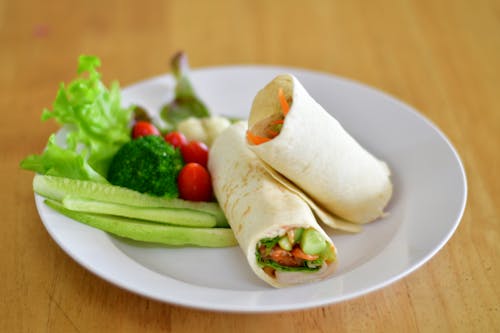
Wraps seem healthier than burgers, but many use refined flour tortillas that are larger than your face. Add cheese, sauces, and fried fillings, and you’ve got a calorie bomb. Some veggie wraps contain more sodium and fat than a Big Mac. The “veggie” label doesn’t mean low-cal.
In other countries, wraps are smaller and simpler—often made with whole grains or fresh flatbread. Americans, however, equate anything wrapped in a tortilla with wellness. It’s the illusion of health wrapped around a deli counter indulgence. And yes, it’s still fast food.
5. Grilled Chicken Sandwiches
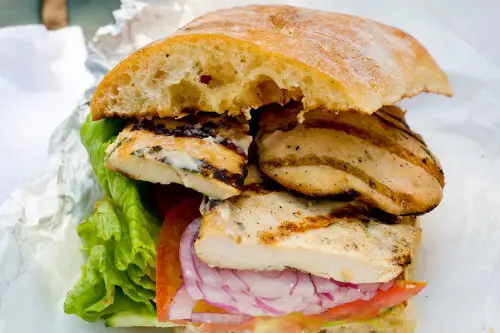
Grilled chicken sounds healthy—until it’s slathered in mayo, stacked on a white bun, and served with fries. Fast-food versions often contain additives, sodium, and hidden sugars. Some grilled chicken sandwiches top 500 calories and 1,000 mg of sodium. It’s not fried—but it’s not clean either.
In many cultures, grilled chicken is served with vegetables or grains. In the U.S., it’s a drive-thru staple with a misleading name. Americans hear “grilled” and think “healthy.” But the toppings and sides tell a different story.
6. Protein Boxes
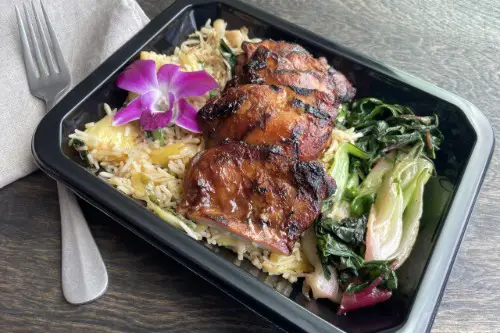
Sold at coffee chains and fast-casual spots, protein boxes promise balanced nutrition on the go. But they often include processed meats, sugary nut butters, and refined crackers. Some contain more saturated fat and sodium than a fast-food burger. It’s portioned convenience—not dietary perfection.
Elsewhere, protein is consumed fresh and minimally packaged. Americans, however, love the bento-box aesthetic and grab-and-go appeal. It feels curated and clean—but it’s still fast food in a cardboard sleeve. And the “protein” label? That’s just marketing.
7. Sushi Rolls
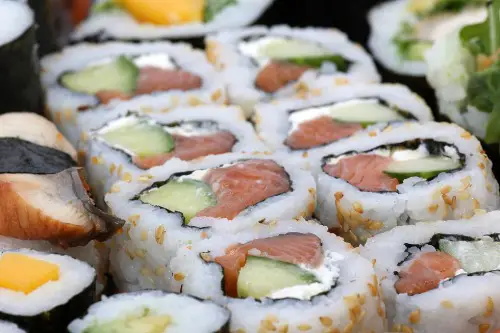
Sushi is often seen as a light, healthy meal—but American-style rolls are stuffed with cream cheese, fried tempura, and sugary sauces. White rice adds empty carbs, and portions are often oversized. A single specialty roll can exceed 500 calories and 1,000 mg of sodium. It’s not sashimi—it’s sushi cake.
In Japan, sushi is minimalist and balanced. In the U.S., it’s a fusion feast with a wellness label. Americans treat sushi like a clean indulgence, but the nutrition says otherwise. It’s fast food with chopsticks.
8. Avocado Toast
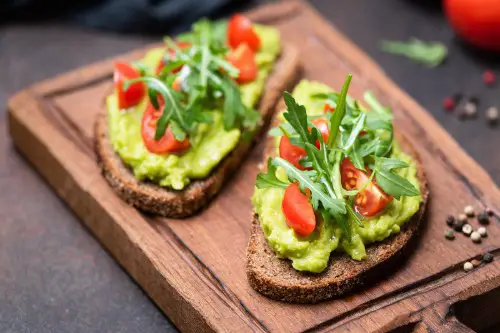
Avocado toast started as a café trend and quickly became a fast-food menu item. But chain versions often use white bread, pile on cheese or bacon, and serve it with sugary drinks. The avocado is healthy—but the rest? Not so much. It’s brunch disguised as a wellness ritual.
In other countries, avocado is eaten simply—with lemon, salt, and whole grains. Americans, however, turned it into a lifestyle accessory. It looks wholesome, but it’s often just a dressed-up sandwich. And yes, it’s still fast food.
9. “Healthy” Fast-Casual Bowls
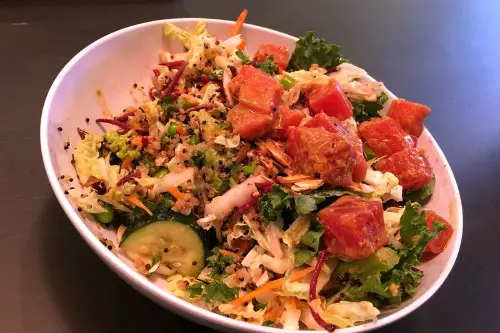
Fast-casual chains offer grain bowls with quinoa, greens, and lean proteins. But many are overloaded with sauces, cheese, and fried toppings. A single bowl can exceed 800 calories and 1,500 mg of sodium. It’s fast food with a Whole Foods filter.
In other cultures, bowls are homemade and balanced. Americans love the customization and branding—but forget to check the nutrition. The bowl looks clean, but the numbers don’t lie. It’s a salad with a side of sodium.
10. Fruit Smoothies
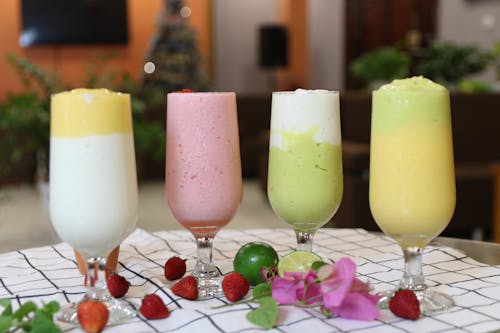
Fruit smoothies are marketed as liquid health—but many contain sugary yogurt, juice concentrates, and sherbet. A large smoothie can pack more sugar than a soda and more calories than a cheeseburger. The fruit is real—but so is the overload. It’s dessert in a cup.
In other countries, smoothies are occasional treats—not daily rituals. Americans treat them like multivitamins with a straw. The branding says “clean,” but the ingredients say “candy.” And yes, it’s technically fast food.
This post 10 Things That Are Technically Fast Food, But Only Americans Think They’re “Healthy” was first published on American Charm.


